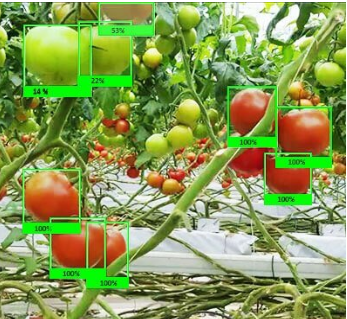Ikeja, Lagos, Nigeria

Data annotation is a crucial step in training AI systems. But how do annotators label and tag data? What tools help ensure accuracy and efficiency?
In this post, we’ll explore:
- The top tools for data annotation (both free and paid)
- How these tools work
- Which one might be the best fit for different types of annotation?
Whether you’re an aspiring annotator or a business scaling AI projects, choosing the right tool is key. Let’s take a closer look.
Label Studio
Label Studio is an open-source, versatile tool for various data types: images, text, audio, and more. It’s perfect for teams on different projects since it supports multiple annotation types, from simple text classification to complex image segmentation. Users can upload data (like images or text) and pick from many annotation options. You can create custom interfaces for your tasks, whether drawing bounding boxes around objects or tagging emotions in text. Label Studio integrates easily with machine learning pipelines, making it ideal for AI development. It’s best for teams needing a customizable tool that works with diverse data formats.
Why it’s popular
- Open-source and free
- Great for multiple annotation types
- Supports collaboration across teams
V7 labs
V7 is a powerful tool for image and video annotation focused on advanced AI applications. Whether you’re annotating for autonomous vehicles or medical imaging, V7 has features for detailed image segmentation, key-point annotation, and 3D labelling. Users upload images or videos, then annotate them by drawing bounding boxes, polygons, or tracking objects across frames. It offers AI-assisted annotation, suggesting labels based on trained models. V7 also supports 3D point cloud annotation for spatial data. It’s best for high-end AI applications, such as self-driving cars, medical imaging, and 3D point cloud data.
Why it’s popular:
- Advanced features for precise annotation
- AI-assisted labelling speeds up the process
- Intuitive interface for large datasets
Prodigy Best for Natural Language Processing (NLP)
Prodigy is an AI-powered tool for text annotation. It’s ideal for tasks like sentiment analysis, text classification, and named entity recognition (NER). Prodigy uses active learning to help annotators label data efficiently. It selects the most useful examples for labelling, speeding up the process and reducing bias. It integrates well with machine learning models for real-time updates and allows for custom workflows with tools for visualising annotation data. Its Projects focused on text-based AI, such as chatbots, sentiment analysis, and language translation.
Why it’s popular
- Fast, efficient text annotation with active learning
- Great for NLP tasks, like text classification and entity recognition
- Works well for large text datasets
CVAT (Computer Vision Annotation Tool)
CVAT is another open-source tool for image and video annotation, developed by Intel. It’s built for tasks needing high precision and scalability, like object tracking and image segmentation. Users can upload large video files or image datasets and annotate them using bounding boxes, polygons, and lines. It includes advanced features like interpolation for annotating video frames and supports collaborative workflows. CVAT integrates with AI models, simplifying the annotation process. It’s best for large-scale image and video projects, like self-driving car models and security systems.
Why it’s popular
- Free and open-source
- Highly scalable for large datasets
- Great for video and image annotation at scale
Doccano
Doccano is an open-source tool designed for text annotation. It’s user-friendly and offers extensive customisation, making it great for text classification, sequence labelling, and sentiment analysis. Users upload text data and annotate it based on categories, like sentiment and named entities. Doccano allows easy collaboration between team members and can export annotations in various formats for machine learning. It’s perfect for creating datasets for chatbots, recommendation systems, and content analysis tools. It’s best for text-based annotation tasks, including NLP, sentiment analysis, and intent classification.
Why it’s popular
- Open-source and free
- Intuitive interface
- Great for text classification and sentiment tasks
Labelbox
Labelbox is an enterprise-level platform for high-quality image and video annotation. It’s often used by large teams with complex AI projects. Labelbox offers various annotation types, including image segmentation and video object tracking. It includes automation features like pre-annotation, suggesting labels based on model predictions. Labelbox supports team collaboration, allowing reviews and management through a central dashboard. It’s best for large companies or teams working on complex, high-stakes AI projects.
Why it’s popular
- High-quality, enterprise-grade features
- Advanced automation tools
- Robust reporting and management features
Which Tool Is Right for You?
Choosing the right annotation tool depends on your project and team’s needs.
In Summary, Data annotation tools are essential for building quality AI models. Whether you’re working with text, images, or videos, the right tool saves you time, reduces errors, and boosts efficiency. Make a careful choice. Whether you’re a freelancer starting or a company scaling your AI project, there’s a tool that fits your needs.
Coming Next Week:
We’ll explore best practices for annotation, including tips for accuracy, efficiency, and avoiding common mistakes.
